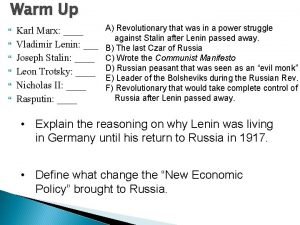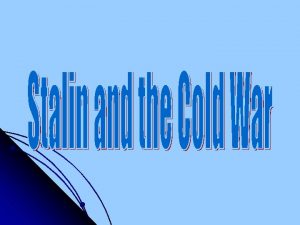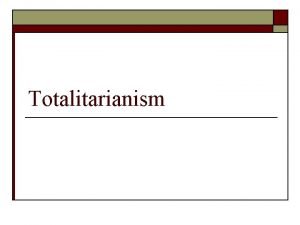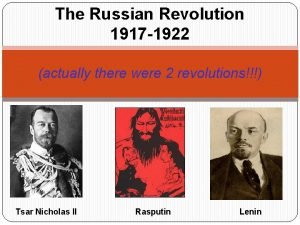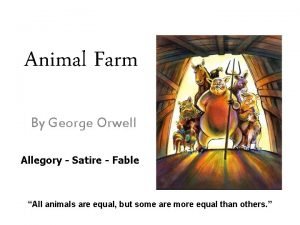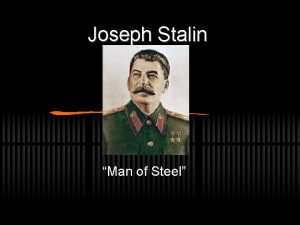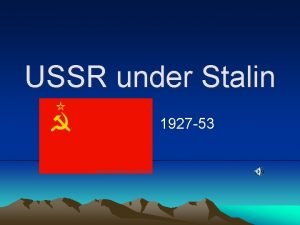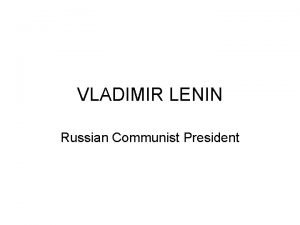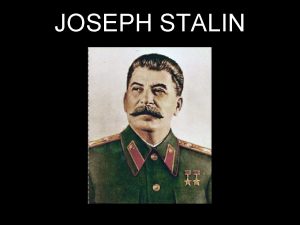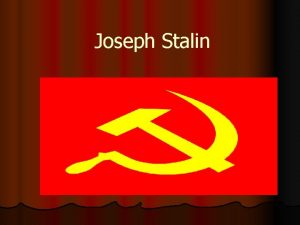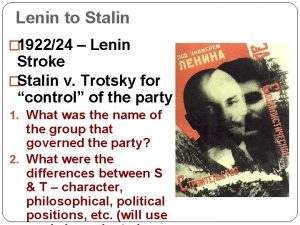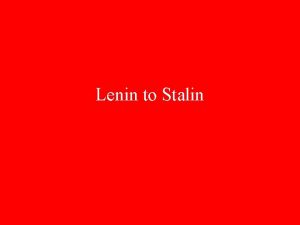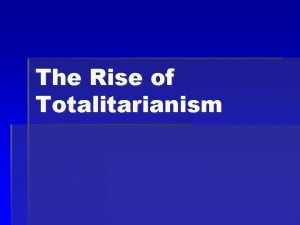Stalin After the death of Vladimir Lenin Joseph









- Slides: 9


Stalin • After the death of Vladimir Lenin, Joseph Stalin took power of the Soviet Union (1922 -1953). • Stalin was a very harsh dictator. • Millions died under Stalin’s rule and the whole country lived in fear of him.

• After WWII, the Soviet Union and the United States were the world’s two strongest countries and people called them “superpowers. ” • The relations between the two countries was very tense. • This time of tension without actual war, is called the Cold War and lasted roughly from 1945 until 1991.

Causes of the Cold War 1. During WWII, The Soviet Army moved west to capture Berlin. As they advanced, they freed Eastern European countries Germany had conquered. After the war, the Soviets force these countries to become Communist. This was called the “Iron Curtain” because it divided Europe into East and West.

IRON CURTAIN • THE TERM “IRON CURTAIN” CAME FROM A SPEECH GIVEN BY WINSTON CHURCHILL ON MARCH 5, 1946 AT WESTMINSTER COLLEGE IN FULTON, MO.

Cause of Cold War 2. The Soviets tried to spread Communism beyond Eastern Europe. The United States was determined to stop this. The superpowers also built powerful weapons to use against one another, this was called the “arms race. ”

BERLIN WALL • The Berlin Wall was a physical barrier separating West Berlin from the East Berlin. This came to symbolize the Iron Curtain between Western (democratic) and Eastern (communist) Europe • The wall separated the two German states for 28 years. Construction began on August 13, 1961 until it was dismantled beginning in late 1989, and was considered to be a longtime symbol of the Iron Curtain. • When the East German government announced on November 9, 1989, that citizens could visit West Germany and West Berlin, crowds of East Germans climbed onto and crossed the wall, joined by West Germans on the other side in a celebratory atmosphere. Over the next few weeks, parts of the wall were chipped away by a euphoric public and by souvenir hunters; industrial equipment was later used to remove almost all of the rest of it. • The fall of the Berlin Wall paved the way for German reunification which was formally concluded on October 3, 1990.


